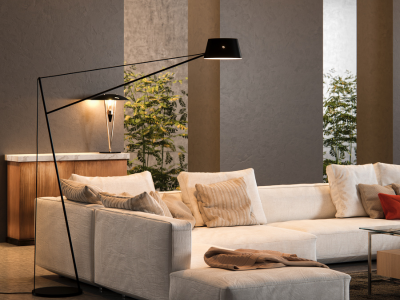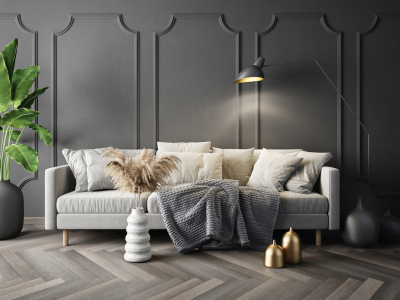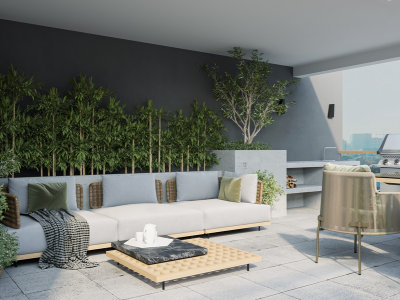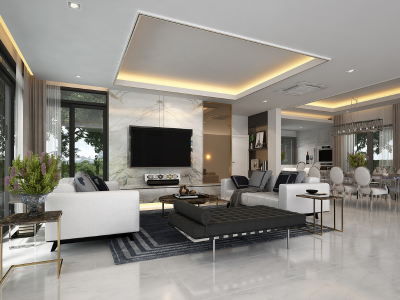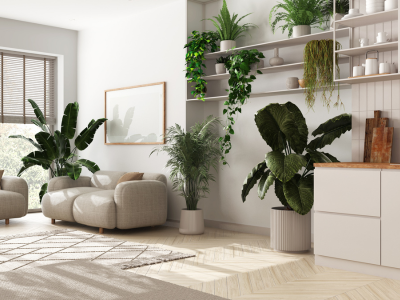
In recent years, biophilic design has become a popular trend in interior design, focusing on connecting the indoors with nature. This design philosophy integrates natural elements like plants, light and organic materials into interior spaces, enhancing both aesthetic appeal and well-being. Whether you live in a city apartment or a suburban home, incorporating nature into your interior design can transform your living space into a calming, harmonious environment.
In this blog, we’ll explore some creative ways to introduce biophilic design into your home, bringing the beauty of the natural world indoors.
1. Embrace Natural Light
One of the fundamental principles of biophilic design is maximizing natural light. Large windows, skylights and open spaces allow sunlight to flood your interiors, creating a warm and welcoming atmosphere. Not only does natural light enhance the beauty of your space, but it also has proven health benefits, boosting mood and energy levels.
If you don’t have the luxury of expansive windows, consider using mirrors strategically to reflect and amplify natural light in darker areas of your home.
Pro Tip: Position furniture near windows to take advantage of natural light and create cozy reading or relaxation spots bathed in sunlight.
2. Introduce Indoor Plants
Plants are the heart of biophilic design, bringing life, color and texture into any room. Whether you opt for large statement plants like fiddle-leaf figs or smaller options like succulents, indoor greenery can instantly refresh your space. Plants also improve indoor air quality, making your home healthier and more vibrant.
Group plants in different sizes and varieties to create a lush, natural feel. Hanging plants, vertical gardens and plant walls are creative ways to add greenery to smaller spaces without taking up valuable floor space.
Pro Tip: Choose low-maintenance plants like snake plants, pothos or peace lilies if you’re new to plant care.
3. Use Natural Materials
Incorporating natural materials like wood, stone and bamboo into your interiors helps to establish a strong connection with nature. Wooden furniture, stone countertops and organic textiles such as cotton or linen can add a rustic yet modern touch to your home. These materials not only look great but also evoke a sense of warmth and tranquility.
Pro Tip: Reclaimed wood or bamboo is an eco-friendly option that adds character and sustainability to your interior design.
4. Create a Water Element
Water is a soothing element that promotes relaxation and peace. You can introduce water features into your home to enhance the biophilic design, whether through a small indoor fountain, an aquarium or even a tabletop water feature. The sound of trickling water can create a serene, spa-like atmosphere that helps reduce stress and anxiety.
Pro Tip: Place water features in your living room or bedroom to create a tranquil retreat where you can unwind after a long day.
5. Opt for Organic Shapes and Patterns
Nature is full of organic, flowing shapes and incorporating these into your design can make your home feel more grounded. Instead of sharp angles and straight lines, opt for furniture, decor and architectural features that have curved or irregular forms. Patterns inspired by leaves, flowers or flowing water can also be used in wallpapers, rugs or upholstery to add a natural touch.
Pro Tip: Look for furniture with soft, rounded edges, such as curved sofas, circular coffee tables or organically shaped mirrors.
6. Add Natural Scents
The ambiance of a room is not just about visuals—scents play a significant role in how a space feels. Natural scents like lavender, eucalyptus or citrus can have a calming and invigorating effect, reinforcing the connection to nature. You can introduce these scents through essential oils, candles or even fresh flowers.
Pro Tip: Incorporate scented candles or diffusers in different areas of your home to create a cohesive, nature-inspired atmosphere.
7. Incorporate Natural Colors
Biophilic design encourages the use of colors found in nature to create a serene and balanced space. Shades of green, brown, beige and blue can evoke the calming beauty of forests, oceans and mountains. Earth tones create a soothing backdrop, while green accents can bring a fresh, lively feel to your home.
Pro Tip: Use an earthy color palette for walls and larger furniture pieces and add pops of green or blue through cushions, artwork or decor items.
Conclusion:
Biophilic design is more than just a trend—it’s a lifestyle choice that promotes well-being, sustainability and harmony with nature. By incorporating natural elements organic shapes and eco-friendly materials into your home, you can create a peaceful retreat that fosters relaxation and rejuvenation.
Embrace the beauty of the outdoors and let nature become a part of your everyday life through thoughtful interior design choices. Start small by adding indoor plants or natural materials and gradually transform your home into a sanctuary that reflects the tranquility and balance of the natural world.


